Jon Cronshaw's Blog, page 30
April 15, 2024
Breaking Boundaries: The Revolutionary Dragonriders of Pern
In the ever-evolving tapestry of fantasy literature, there’s a thread that glows as fiercely as dragonfire: Anne McCaffrey’s “Dragonriders of Pern” series.
Before McCaffrey, dragons in fantasy were often relegated to the role of hoard-hoarding, maiden-eating nuisances.
Then came Pern, a world where dragons were not just beasts to be slain but noble companions, integral to society’s very survival.
It was a game-changer.
Breaking Genre Boundaries: Fantasy Meets Science FictionMcCaffrey did something audacious with her dragons: she gave them a scientific backstory.
These weren’t your garden-variety mythological creatures; they were the product of genetic engineering, an ingenious blend of fantasy and science fiction.
This melding of genres was revolutionary.
It suggested that dragons needn’t be confined to the realms of swords and sorcery; they could soar in the realms of spaceships and science, too.
The Power of Telepathic Bonds: More Than Just PetsIn Pern, dragons and their riders share a telepathic bond that goes beyond mere companionship.
This emotional and mental connection added a new depth to the human-animal bond trope in fantasy.
It wasn’t just about having a pet with scales and a penchant for barbecuing sheep; it was about a profound, symbiotic relationship.
McCaffrey showed us that dragons could be allies, friends, and soulmates, not just oversized lizards with attitude problems.
Strong Female Characters: Not Just Damsels in DistressLet’s face it: the fantasy genre hasn’t always been kind to its female characters.
Then along came McCaffrey, putting women in the saddle – quite literally.
Her female characters were dragonriders, leaders, and scientists.
They weren’t waiting to be rescued; they were busy saving the world, thank you very much.
This shift was not just refreshing; it was revolutionary, paving the way for more nuanced and powerful female characters in the genre.
Dragon Lore and Cultural ImpactMcCaffrey’s dragons were not just creatures of fantasy but embodiments of cultural significance.
She explored how dragons could symbolize various aspects of human society, including power, wisdom, and spiritual guidance.
Her portrayal of dragons influenced not only literature but also art, film, and gaming, contributing to the broader cultural fascination with these mythical creatures.
Expanding the Fantasy LandscapeThe “Dragonriders of Pern” series opened up new possibilities for world-building in fantasy literature.
McCaffrey’s meticulous crafting of Pern’s history, geography, and societal structures set a new benchmark for immersive and believable fantasy worlds.
Her work inspired authors to create more detailed and richly imagined universes, elevating the standard of fantasy world-building.
A Legacy That Soars Beyond PernAnne McCaffrey‘s “Dragonriders of Pern” series stands as a monumental contribution to fantasy literature.
It broke new ground in genre-blending, character development, and world-building, leaving an indelible mark on the landscape of fantasy.
Her dragons, more than mere creatures of legend, became symbols of possibility, challenging and inspiring generations of readers and writers.
McCaffrey’s legacy endures, as vibrant and influential as the dragons she brought to life, forever soaring in the imaginations of those who venture into her world.
follow jon on Ream.The post Breaking Boundaries: The Revolutionary Dragonriders of Pern first appeared on Jon Cronshaw.
April 13, 2024
Rolling the Dice on Imagination: The Monumental Impact of Dungeons & Dragons on Fantasy Literature
In the realm of fantasy literature, where dragons soar and magic courses through the very air, one game has cast a spell of inspiration and creativity like no other: Dungeons & Dragons (D&D).
Since its inception in the 1970s, this tabletop role-playing game hasn’t just entertained legions of players; it has profoundly influenced the landscape of fantasy literature.
Let’s embark on a quest to explore the dungeons (and perhaps a dragon or two) to discover how D&D has shaped the world of fantasy storytelling.
A Brief Expedition into the World of D&DFor those who haven’t rolled a twenty-sided die in the pursuit of adventure, Dungeons & Dragons is a fantasy role-playing game where players create characters to embark on imaginary quests, guided by a Dungeon Master.
It’s a game of limitless possibilities, where the only boundaries are the players’ imaginations.
Character Archetypes: The Birthplace of Heroes (and Villains)D&D has been instrumental in popularizing and codifying fantasy character archetypes.
The game’s classes – like wizards, rogues, and paladins – have become staples in fantasy literature, providing a template for authors to craft their characters.
The game’s influence is evident in the way these archetypes have evolved in literature, growing beyond their D&D origins into complex, multifaceted characters.
World-Building: Crafting Realms of WonderAnother area where D&D has left its mark is in the art of world-building.
The game’s elaborate settings, like the Forgotten Realms and Greyhawk, offer richly detailed worlds, complete with histories, geographies, and cultures.
This attention to detail has inspired authors to create more immersive and intricate fantasy worlds in their writing, elevating the standard for what readers expect from fictional universes.
Plot and Narrative Structure: The Freedom of StorytellingD&D’s open-ended narrative structure has influenced how stories are told in fantasy literature.
The game encourages collaborative storytelling, with players contributing to the narrative’s direction.
This has inspired a more dynamic form of storytelling in literature, where plots are not strictly linear but woven with the threads of character choices and chance.
The Monster Manual: A Bestiary of InspirationD&D’s Monster Manual, a compendium of creatures players might encounter, has become a rich source of inspiration for fantasy authors.
The detailed descriptions and lore of these creatures have sparked the imaginations of writers, leading to the creation of diverse and original monsters in fantasy literature.
Magic Systems: The Art of Arcane MechanicsThe game’s approach to magic, with its rules and schools of thought, has influenced how magic is portrayed in fantasy literature.
Authors have drawn on D&D’s structured magic systems to create their own unique and logical magical frameworks, adding depth and consistency to the fantastical elements of their stories.
Influence Beyond the PageD&D’s impact extends beyond just literature.
It has permeated popular culture, influencing films, television, and other forms of media.
Its role in the development of computer RPGs and its presence in various digital media have further cemented its influence on the fantasy genre.
The Enduring Legacy of Dungeons & DragonsDungeons & Dragons has done more than provide a platform for imaginative play; it has profoundly influenced the genre of fantasy literature.
By providing a framework for character development, world-building, and storytelling, D&D has become a wellspring of inspiration for generations of writers.
In the grand saga of fantasy literature, D&D’s role is as pivotal as that of any hero or sage, a true architect in the realm of imagination and creativity.
follow jon on youtube.The post Rolling the Dice on Imagination: The Monumental Impact of Dungeons & Dragons on Fantasy Literature first appeared on Jon Cronshaw.
April 12, 2024
Escape to New Wastelands: Books to Read Post-Fallout Viewing
Just finished the Fallout series on Amazon Prime and feeling like the world outside is a bit too bright and cheery?
Fear not, because I’ve compiled a list of ten books that will keep you safely ensconced in the comforting glow of dystopian despair.
From nuclear wastelands to societal meltdowns, these reads will make the end of the world seem like just another day in paradise.
“A Canticle for Leibowitz” by Walter M. Miller Jr.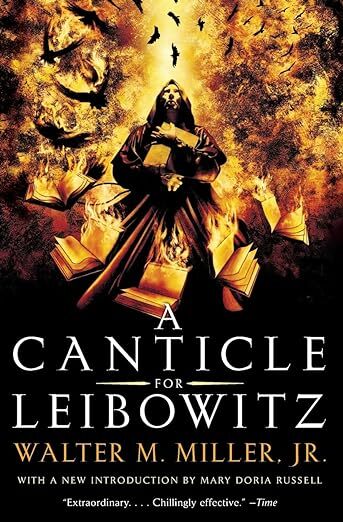
Kick off your post-apocalyptic journey with this classic.
Watch as a group of monks attempt to salvage the remnants of human knowledge after a nuclear catastrophe.
It’s like trying to rebuild civilisation with nothing but a screwdriver and good intentions.
get your copy.“The Road” by Cormac McCarthy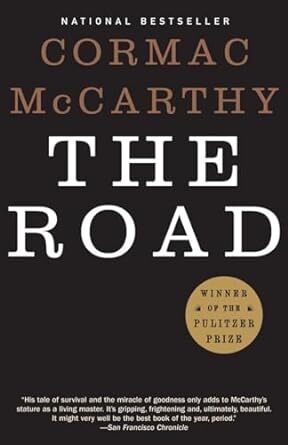
If you thought the Wasteland was grim, wait until you walk down “The Road”.
McCarthy’s stripped-back prose and haunting narrative will make your latest jaunt through the Fallout universe seem like a holiday in the sun.
get your copy.“Oryx and Crake” by Margaret Atwood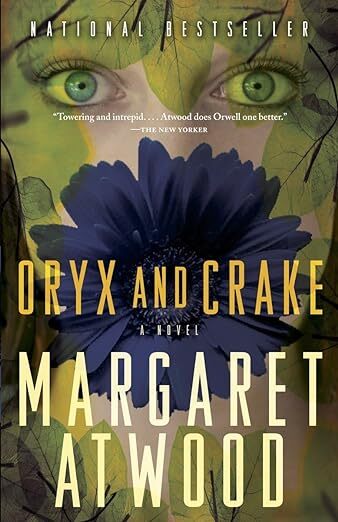
Dive into a world of genetic engineering gone wild with Atwood’s sharp wit slicing through the narrative like a Ripper through raider armour.
It’s a tale of friendship and betrayal with the bonus of a world attempting to reboot itself.
get your copy.“Do Androids Dream of Electric Sheep?” by Philip K. Dick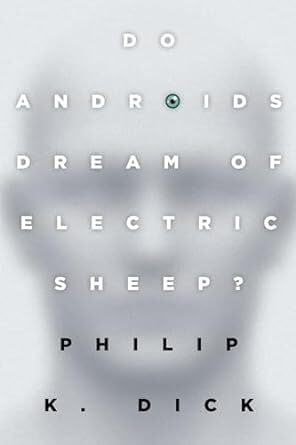
If synthetic humans and moral conundrums are your thing, then Philip K. Dick’s classic will not disappoint.
It’s a world where the line between human and android is as blurry as your vision after a night in the Third Rail.
get your copy.“Station Eleven” by Emily St. John Mandel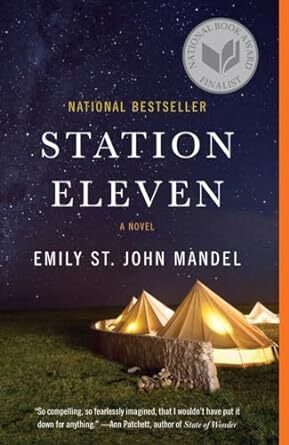
For those who prefer their post-apocalyptic settings with a side of Shakespeare, “Station Eleven” takes you on a journey with a travelling symphony, proving that culture can survive anything, even a flu pandemic that wipes out most of humanity.
get your copy.“The Postman” by David Brin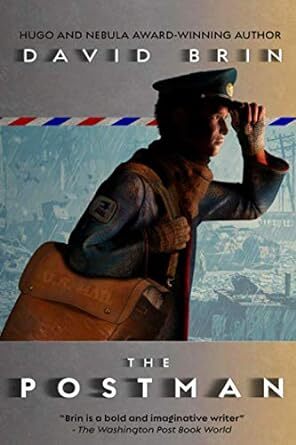
Rediscover the importance of snail mail in a world where all the servers are permanently down.
This novel redefines the mail carrier as a hero, journeying through a fallen America to deliver hope, one letter at a time.
get your copy.“Alas, Babylon” by Pat Frank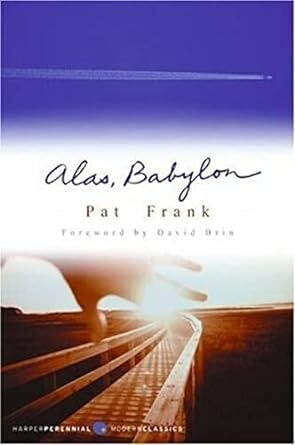
This 1959 novel about a small Florida town surviving after a nuclear war will have you stocking up on canned goods and fortifying your basement.
It’s survivalist fantasy at its best, complete with fish-out-of-water antics and community spirit.
get your copy.“Parable of the Sower” by Octavia E. Butler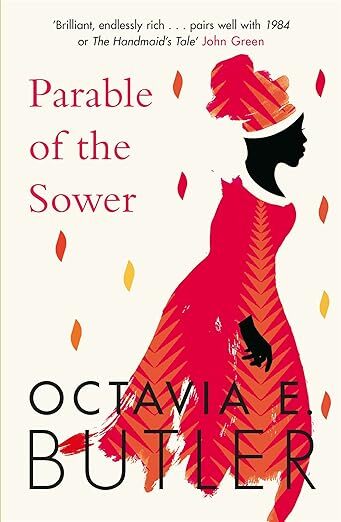
Travel with Lauren Olamina as she navigates a society falling apart at the seams and attempts to plant the seeds of a new community.
It’s full of the kind of hope you need when everything else looks bleak.
get your copy.“Blindness” by José Saramago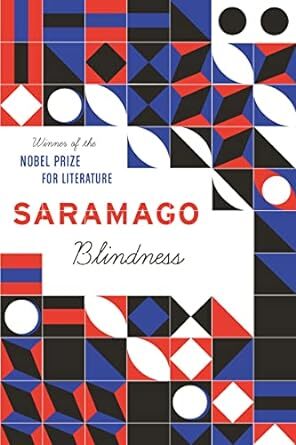
If societal collapse via inexplicable epidemic is what keeps you up at night, “Blindness” will be your bedtime story.
It’s a profound exploration of humanity’s breakdown and the fragile threads that hold society together.
get your copy.“Metro 2033” by Dmitry Glukhovsky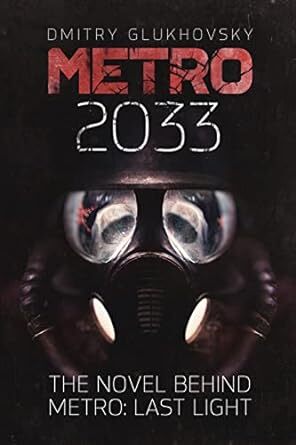
Finish off your reading list with a trip to the Moscow metro, where the last remnants of humanity cling to existence beneath a radioactive wasteland.
It’s like the Tube during rush hour, only with more mutants and less hope.
get your copy.So there you have it, a reading list to keep you in the apocalyptic mindset long after the credits roll on Amazon’s Fallout.
Remember, when life gives you radiation, make radaway.
Happy reading, and remember to keep that Geiger counter handy!
Also available: “The Wasteland series” by Jon Cronshaw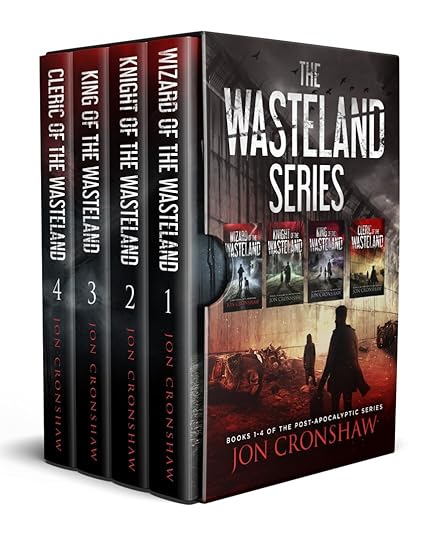
“The Wasteland” series by Jon Cronshaw takes readers into a bleak, post-apocalyptic world where Abel, the protagonist, struggles with addiction amidst the ruins.
Surviving the end of the world was just the beginning; now he must battle his own demons while scraping a living in the desolate wastelands with his loyal dog.
As Abel stumbles upon a group of enslaved children, his quest for redemption pushes him to the limits.
Will he conquer his addiction?
Can he provide a glimmer of hope in a seemingly hopeless world?
This compelling series, comprising all four novels, masterfully blends the harsh realities of survival with the redemptive arc of a flawed hero fighting against evil.
It’s a must-read for fans of intense, character-driven post-apocalyptic narratives.
get your copy.*Note: This post includes affiliate links.
The post Escape to New Wastelands: Books to Read Post-Fallout Viewing first appeared on Jon Cronshaw.
📚 Productive Writing, Warhammer 40k & The Gentlemen | Author Diary, April 12, 2024 – The Knight and the Rebel 🗡️✨
 Progress on “The Knight and the Rebel”
Progress on “The Knight and the Rebel”
This week, I added another 20,000 words to “The Knight and the Rebel,” Ravenglass Legends book 3. This brings me two-thirds into Ragnar’s POV, pushing the story closer to completion. The writing has been flowing well, and I’m excited about the depth and development of the narrative.
 Watching “The Gentlemen” on Netflix
Watching “The Gentlemen” on Netflix
I’ve started watching “The Gentlemen,” a new series by Guy Ritchie on Netflix. As a fan of Ritchie’s style, this crime caper series has been thoroughly enjoyable with its sharp dialogue and twisty plot lines. It’s been a fantastic watch that perfectly complements my downtime.
 Back to Warhammer 40k
Back to Warhammer 40k
I’ve revisited the Warhammer 40k universe, reading two Primarchs novels: ‘Vulkan’ and ‘Ferrus Manus.’ While ‘Vulkan’ didn’t quite hit the mark for me, ‘Ferrus Manus’ has been gripping so far. It’s always intriguing to explore the lore and characters of this expansive universe.
As I continue with the drafting of “The Knight and the Rebel” and enjoy some quality reading and viewing, I look forward to sharing more insights and updates next week.
Feel free to discuss your experiences with prolific writing phases, your thoughts on “The Gentlemen,” or any Warhammer 40k novels you’ve enjoyed. Don’t forget to like, share, and subscribe for more updates from my author’s life and adventures in storytelling!
follow jon on youtube.The post 📚 Productive Writing, Warhammer 40k & The Gentlemen | Author Diary, April 12, 2024 – The Knight and the Rebel 🗡️✨ first appeared on Jon Cronshaw.
April 11, 2024
Lessons for Fantasy Authors in ‘A Confederacy of Dunces’
In the mesmerising realm of fantasy literature, where authors spin tales of magic and wonder, sometimes the most unexpected books, like John Kennedy Toole’s “A Confederacy of Dunces,” become wellsprings of inspiration.
Celebrated for its vibrant characterisations, evocative New Orleans setting, and unique humour, this novel is a treasure trove for fantasy writers.
Join us on a jaunt through the lively streets with Ignatius J. Reilly to uncover the secrets this distinctive and masterful novel holds for fantasy storytelling.
Creating Unforgettable CharactersIgnatius J. Reilly, the unforgettable protagonist of “A Confederacy of Dunces,” stands out with his unique voice and persona. Fantasy authors can learn from this the value of crafting characters that linger in the mind for their quirks and complexities, not just for their roles in the plot.
Elevating Setting to a CharacterIn the novel, New Orleans isn’t just a backdrop; it’s a pulsating entity in its own right.
For fantasy writers, this translates to making their settings more than mere stages – they should be living, breathing parts of the narrative that shape events and mirror themes.
Weaving Humour into the NarrativeToole’s novel balances humour with an engaging storyline.
Fantasy writers can thread humour through their tales to lighten the mood, enrich character dynamics, and offer contrast to darker themes.
Satire as a Narrative ToolKnown for its satirical edge, “A Confederacy of Dunces” critiques society and culture with wit.
Fantasy writers can employ satire in their work, using the genre to reflect on real-world issues and infuse their stories with deeper meaning.
Crafting a Rich Ensemble of Secondary CharactersThe novel boasts a spectrum of colourful secondary characters who enrich the narrative.
In fantasy, well-crafted side characters can add depth, offer new viewpoints, and complexify the plot.
Embracing the AbsurdToole’s novel revels in absurdity, both in scenarios and characters.
Fantasy authors can harness this, creating outlandish situations and characters that defy norms and spark the imagination.
Mastering DialogueThe novel’s dialogue is a tool that animates characters and propels the story.
In fantasy, good dialogue is key to revealing character traits, pushing the plot forward, and constructing the world.
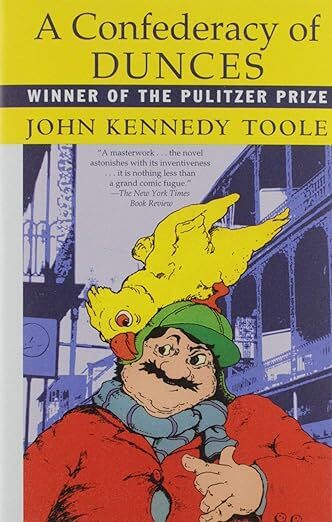 get your copy.
get your copy.With its rich character development, vivid setting, and seamless blend of humour and satire, “A Confederacy of Dunces” offers a mine of ideas for fantasy writers.
Integrating these facets can infuse fantasy stories with the humour, depth, and originality found in Toole’s celebrated novel.
Are you set to infuse your stories with the quirky charm and satirical bite of “A Confederacy of Dunces”?
How will its unique take on characters and setting shape your fantastical narratives?
Share your insights, and let’s explore how this literary classic can revolutionise fantasy writing.
follow jon on youtube.Note: The link above is an affiliate link.
The post Lessons for Fantasy Authors in ‘A Confederacy of Dunces’ first appeared on Jon Cronshaw.
April 10, 2024
Reinventing the Fantasy Hero: A Look at “Elric of Melniboné”
In the vibrant tapestry of fantasy literature, where heroic figures often brandish gleaming swords, Michael Moorcock‘s “Elric of Melniboné” series brought forth a weapon with more depth than many of its wielders.
This saga was not merely about heroes and their loyal arms; it revolved around a sword, Stormbringer, embodying a character as pivotal as Elric, the series’ fated hero.
Moorcock didn’t merely craft a narrative; he etched a complex and ominous rune onto the polished façade of fantasy fiction.
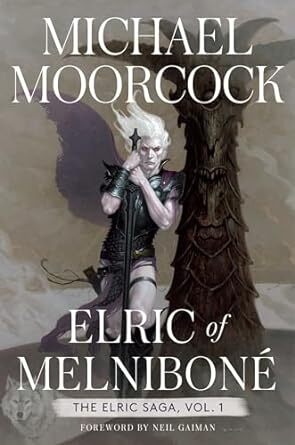 A Hero? More Like an Anti-Hero
A Hero? More Like an Anti-HeroElric, the protagonist of the “Elric of Melniboné” series, stood in stark contrast to the typical stalwart, virtuous heroes of conventional fantasy.
As a frail, melancholic albino sorcerer reliant on drugs and his sword for vitality and endurance, Elric epitomised the anti-hero before it became a mainstay of the genre.
Moorcock depicted a protagonist more tormented and conflicted than any convoluted maze.
The Sword That Consumes SoulsIn the “Elric of Melniboné” series, the sentient, soul-devouring sword Stormbringer emerged as a dark entity in its own right.
A paradoxical blend of curse and power for Elric, this weapon’s portrayal as an autonomous character with distinct motivations upended the usual sword-and-sorcery tropes, paving the way for numerous dark fantasy stories to follow.
Multiverse and Metafiction: Blurring the LinesMoorcock’s narrative ambition extended beyond redefining characters and plots.
In his “Elric of Melniboné” series, he toyed with the foundations of reality itself, unveiling the concept of the multiverse.
His interwoven universes and the Eternal Champion motif transcended simple crossovers, merging various series and realities into a labyrinthine and fascinating tapestry.
This approach later influenced the realms of fantasy and science fiction, encouraging writers to envision narratives that spanned beyond single, linear worlds.
The Dark Legacy: Influencing Modern FantasyMoorcock’s “Elric of Melniboné” casts long, indelible shadows across the landscape of fantasy literature.
Its impact is evident in the moral grey areas, intricate characters, and sombre undertones prevalent in contemporary fantasy.
From George R.R. Martin’s “A Song of Ice and Fire” to Joe Abercrombie’s “The First Law” series, the ripples of Moorcock’s profound, nuanced narrative style and his exploration of power’s darker facets continue to resonate.
A Storm That Never Quite PassesThe “Elric of Melniboné” series remains a landmark in the realm of fantasy literature.
Its legacy is rooted not only in its groundbreaking character and story development but also in its courage to delve into the deeper, more complex aspects of power, heroism, and reality.
In the genre of swords and sorcery, the series, especially its iconic sword Stormbringer, stands as a beacon – a testament to the enduring power of stories that dare to navigate the tempests within.
follow jon on youtube.The post Reinventing the Fantasy Hero: A Look at “Elric of Melniboné” first appeared on Jon Cronshaw.
April 8, 2024
Dune: The Spice of Life in the Fantasy Genre
In the grand, sweeping dunes of literary history, there lies a colossal sandworm of a novel: Frank Herbert’s “Dune”.
This isn’t just a book; it’s a seismic event in the fantasy landscape, reshaping everything in its wake.
You see, before “Dune”, fantasy was a realm of dragons, elves, and conveniently misplaced rings.
Herbert, however, decided that what the genre really needed was a desert planet, a hefty dose of political intrigue, and spice…
Lots of spice.
The Politics of Fantasy: More Treacherous Than a SandwormBefore “Dune”, who would have thought that a fantasy novel could double as a crash course in political science?
Herbert introduced readers to a universe where power plays, backstabbing, and ecological exploitation were the order of the day.
Suddenly, fantasy wasn’t just about good versus evil; it was about complex moral ambiguities, resource control, and the kind of Machiavellian manoeuvres that would make a medieval king blush.
Ecology and Environment: More Than Just Backdrop“Dune” took the idea of world-building (quite literally) and ran with it.
The planet Arrakis wasn’t just a stage for the drama; it was a character in its own right.
Herbert’s focus on ecology, environmentalism, and the interplay between a people and their landscape was groundbreaking.
He showed us that the environment could be a protagonist, an antagonist, and a plot point all rolled into one.
In “Dune”, the sands shift, and with them, the genre itself.
The Hero’s Journey: Redefined with SpiceAh, the hero’s journey – a staple of fantasy literature.
But in “Dune”, Herbert took this well-trodden path and sprinkled it with spice (literally).
Paul Atreides isn’t your typical fantasy hero; he’s a messianic figure, a political pawn, and a prophet rolled into one.
His journey is less about defeating a dark lord and more about grappling with destiny, prophecy, and the weight of expectations.
It’s the hero’s journey, yes, but not as we knew it.
Influence Beyond the Sands: Dune’s LegacyThe ripples of “Dune” can be felt across the fantasy genre.
It encouraged authors to think bigger, to incorporate real-world issues like religion, politics, and environmentalism into their narratives.
Fantasy worlds became more complex, more nuanced.
Herbert didn’t just write a novel; he expanded the boundaries of what fantasy could be.
Post-“Dune”, the genre was a wilder, richer place – a landscape transformed, much like Arrakis itself.
Language and Culture: The Spice of Life“Dune” was not just about sprawling deserts and political intrigue; it delved deep into the nuances of language and culture.
Herbert crafted a universe rich in different languages, customs, and social norms, reflecting the true diversity of human experience.
This intricate detailing set a new standard for world-building, pushing authors to create more immersive and believable fantasy worlds.
Philosophy and Religion: More Than Mere FantasyHerbert wove complex philosophical and religious themes throughout “Dune”.
He explored ideas of fate, free will, and the nature of power, transcending the traditional boundaries of fantasy.
“Dune” became a text that not only entertained but provoked thought, challenging readers to ponder deeper existential questions.
The Timeless Legacy of “Dune”“Dune” stands as a monumental work in the realm of fantasy literature.
Its impact on the genre is immeasurable, inspiring generations of writers and readers alike.
Frank Herbert’s masterpiece remains a beacon of innovation in storytelling, world-building, and thematic exploration.
In the shifting sands of literary trends, “Dune” endures as a timeless classic, its influence as enduring and pervasive as the desert winds of Arrakis itself.
follow jon on YouTube.The post Dune: The Spice of Life in the Fantasy Genre first appeared on Jon Cronshaw.
April 6, 2024
Exploring Magic and Myth in the World of Professional Wrestling
In the high-octane, body-slamming world of professional wrestling, where reality and fantasy grapple on the mat, there exists a surprising yet undeniable synergy with the realms of magic and the supernatural.
This isn’t just about athletes in spandex throwing each other around; it’s a stage where elements of fantasy often tag-team with physical prowess.
Let’s dive into the ring (mind the ropes) and explore how the fantastical world of sorcery and supernatural shenanigans has body-slammed its way into professional wrestling.
Summoning the Spectacle: Wrestling’s Theatrical MagicFirst things first: professional wrestling is as much about spectacle as it is about sportsmanship.
It’s a world where larger-than-life characters perform feats that often defy logic and sometimes gravity.
In this arena, the incorporation of magical and supernatural elements isn’t just entertainment; it’s an extension of wrestling’s inherent theatricality.
It’s like watching a wizard’s duel, except the wands are replaced with folding chairs and the spells with smack talk.
Characters of Mythic Proportions: Wrestling’s PantheonWrestling has always been a fertile ground for characters that seem ripped from the pages of a fantasy epic.
From the demonic undertones of The Undertaker to the voodoo mystique of Papa Shango, wrestlers often embody archetypes akin to those found in myth and legend.
They’re modern-day warriors and sorcerers, battling it out not in ancient arenas, but in the squared circle.
Storylines of Epic Quests and CursesThe narratives woven in the world of wrestling often mirror the grand quests and dark curses of fantasy lore.
Feuds and storylines are epic sagas of betrayal, revenge, and redemption, playing out like a soap opera scripted by a team of dungeon masters.
These tales, where wrestlers pursue championship belts with the zeal of knights seeking holy grails, are steeped in a sense of destiny and larger-than-life drama.
Rituals, Symbols, and Sorcerous EntrancesIn wrestling, the entrance is an incantation, a ritual that sets the stage for the combatant’s persona.
Pyrotechnics, eerie lighting, and music transform these entrances into something akin to a sorcerer making a grand appearance.
These moments are charged with a magical energy, captivating the audience and elevating the wrestler to an almost mythical status.
Wrestling’s Answer to Necromancy: The Resurrection AngleIn the annals of wrestling, no one is ever truly gone.
The ‘resurrection’ of a wrestler, once thought retired or vanquished, is a common trope, echoing the age-old fantasy theme of characters returning from the dead.
It’s a narrative device that adds a layer of supernatural intrigue to the mix, proving that in wrestling, as in fantasy, death is but a temporary inconvenience.
The Enchanted RingProfessional wrestling’s embrace of the supernatural and magical elements is more than a gimmick; it’s a testament to the art form’s storytelling power and imagination.
In the wrestling ring, where the boundaries between reality and fantasy blur, magic and myth come alive in a spectacle of physical prowess and theatrical flair.
It’s a world where the fantastical becomes tangible, and for a few hours, we can believe in the magic of the mat.
follow jon on youtube.The post Exploring Magic and Myth in the World of Professional Wrestling first appeared on Jon Cronshaw.
April 5, 2024
📚 Intense Writing Week & Family TV Time | Author Diary – April 5, 2024 – The Knight and the Rebel 🐉✨
The post 📚 Intense Writing Week & Family TV Time | Author Diary – April 5, 2024 – The Knight and the Rebel 🐉✨ first appeared on Jon Cronshaw.
April 4, 2024
In the Ring of Fantasy: What Authors Can Learn from Professional Wrestling
In the boisterous, over-the-top world of professional wrestling, where heroes and villains clash in epic battles of strength and cunning, there lies a treasure trove of inspiration for fantasy authors.
Yes, you read that right.
The world of piledrivers, body slams, and theatrical personas is ripe with lessons for crafting compelling fantasy narratives.
So, let’s climb into the ring and discover what fantasy writers can learn from the flamboyant spectacle of professional wrestling.
Larger-than-Life Characters: Embracing the ExtremeProfessional wrestling thrives on its larger-than-life characters.
From the noble hero to the dastardly villain, these personas are exaggerated, charismatic, and unforgettable.
Fantasy authors can take a cue from this, creating characters that are bold and memorable, with clear motivations and larger-than-life personalities that captivate readers.
The Art of World-Building: Crafting an Immersive ArenaJust as wrestling promotions create immersive worlds with their own lore, history, and rules, so too should fantasy authors.
Building a rich, well-thought-out world is crucial in fantasy literature.
It provides the backdrop against which the drama unfolds, much like the wrestling ring sets the stage for epic showdowns.
Narrative Arcs: Tension, Conflict, and ResolutionProfessional wrestling is all about storytelling.
Each match is a mini-narrative, complete with conflict, climax, and resolution.
Fantasy writers can learn from this structure, ensuring that their stories have compelling arcs that keep readers engaged and cheering for more.
The Power of Good vs EvilThe classic battle between good and evil is at the heart of both professional wrestling and fantasy literature.
Wrestling shows us how these archetypes can be used effectively to create gripping narratives, with clear stakes and passionate rivalries that echo the epic battles of fantasy lore.
Audience Engagement: Keeping Readers on the Edge of Their SeatsProfessional wrestling is nothing without its audience.
Similarly, fantasy authors should keep their readers in mind, crafting stories that elicit strong emotional responses, whether it’s rooting for the hero, despising the villain, or gasping at an unexpected plot twist.
The Suspension of DisbeliefWrestling asks its viewers to suspend disbelief and get lost in the spectacle.
This is a valuable lesson for fantasy authors, who must also persuade readers to believe in their imaginary worlds.
By weaving in enough realism and relatable emotions, authors can make even the most fantastical elements seem plausible.
Embracing the TheatricalityProfessional wrestling’s success hinges on its theatricality, with over-the-top performances and dramatic storylines.
Fantasy authors can draw on this aspect, infusing their narratives with a sense of spectacle and drama that keeps readers enthralled.
From the Squared Circle to the Written Page
While professional wrestling and fantasy literature may seem worlds apart, they share common ground in storytelling, character creation, and world-building.
By embracing the larger-than-life, the dramatic, and the fantastical elements of wrestling, fantasy authors can enhance their narratives and keep readers gripped from the first page to the last.
So, fantasy writers, are you ready to tag team with some wrestling-inspired storytelling techniques?
What elements from the world of professional wrestling do you find most applicable to your fantastical tales?
Share your thoughts, and let’s dive into the narrative ring together.
follow jon on youtube.The post In the Ring of Fantasy: What Authors Can Learn from Professional Wrestling first appeared on Jon Cronshaw.



